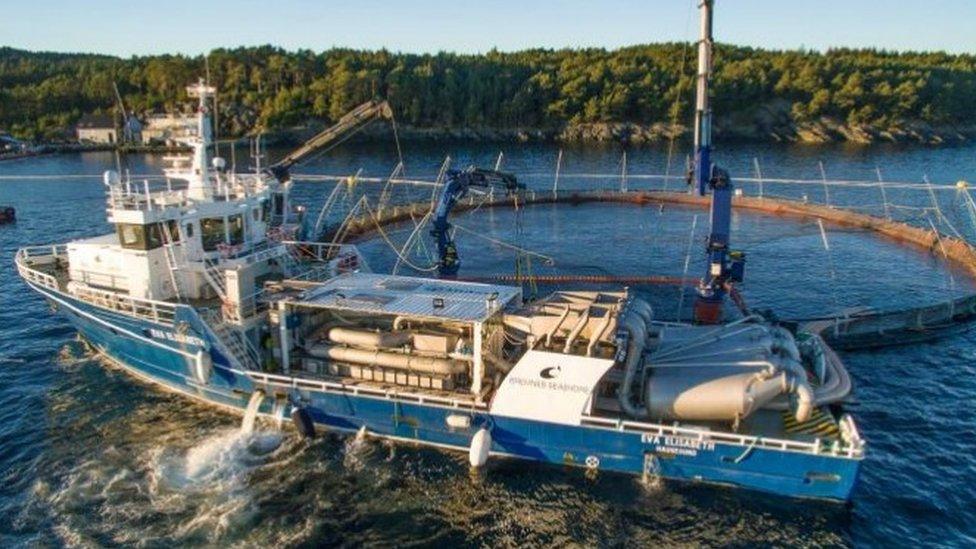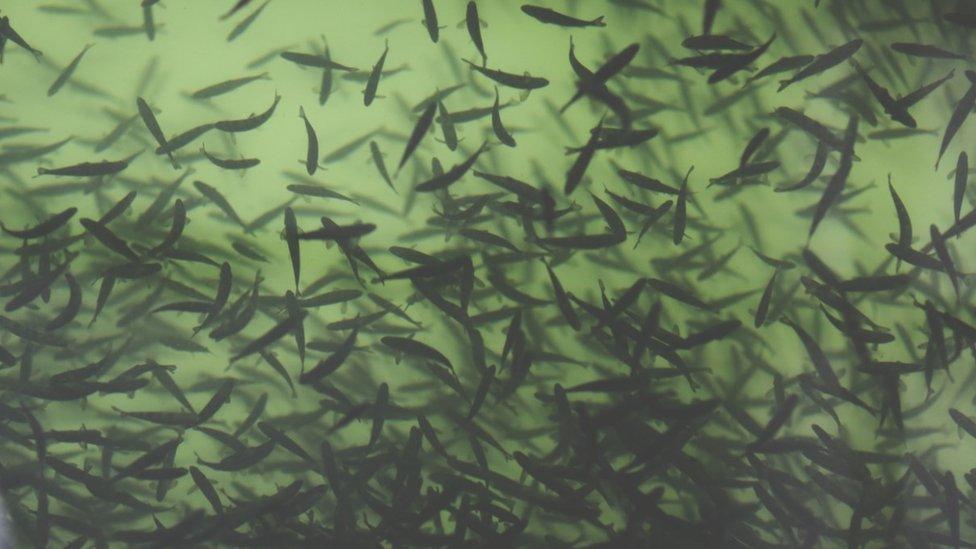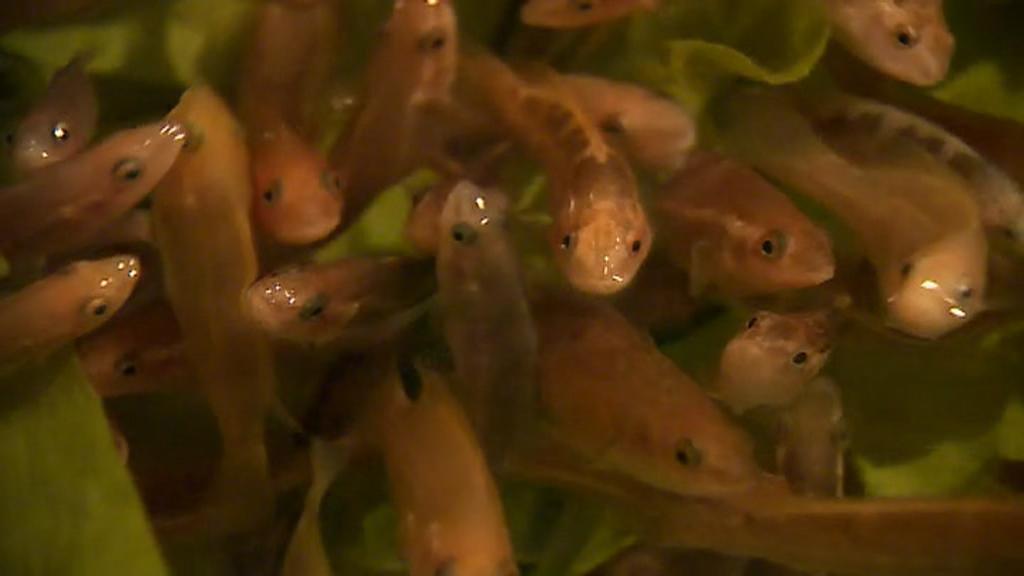Scottish Sea Farms starts sea lice device trials
- Published

The Thermolicer is fitted on a boat or a barge and can treat up to 80 tons of fish per hour, according to its manufacturer
Salmon producer Scottish Sea Farms (SSF) has invested more than £4m in new equipment that uses a chemical-free approach to controlling sea lice.
Trials of the Thermolicer device are under way in Shetland.
It works by bathing fish briefly in lukewarm water, capitalising on the parasite's low tolerance for sudden changes in temperature.
No chemicals are used and the fish are unharmed in the process, according to SSF.
The Thermolicer, which is made by Norwegian firm Steinsvik, is fitted on a boat or a barge. Each machine can treat up to 80 tons of fish per hour.
The sea louse is a naturally-occurring parasite that is responsible for significant losses to wild and farmed fish stocks.
It can latch on to salmon, eat their skin and blood, and cause infections.
'Sea lice challenge'
SSF said it would share its experiences of using the Thermolicer with other salmon farmers in Scotland.
Ralph Bickerdike, head of fish health for SSF, said: "Sea lice is a challenge for all fish farmers in most salmon-producing areas.
"At Scottish Sea Farms we intend being part of the solution to this challenge.
"Our work with SAIC (Scottish Aquaculture Innovation Centre) and other industry partners in this area has already reaped huge benefits through our work with wrasse and lumpfish - varieties of cleaner fish.
"The Thermolicer is the latest step in developing alternative tools to maintain a sustainable solution to fish health management."
SAIC chief executive Heather Jones said: "We are delighted to see this level of innovation and collaboration happening in Scotland.
"The industry is tackling the biological issues it faces with energy and initiative, and with a strong commitment to sustainable practices."
- Published6 July 2016

- Published19 November 2013
